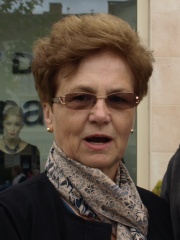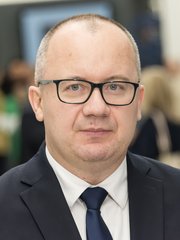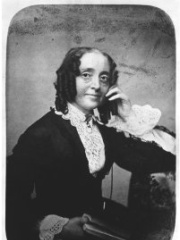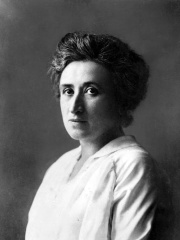
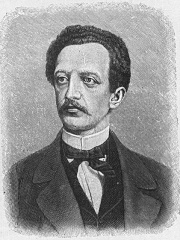
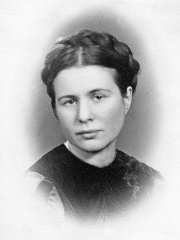
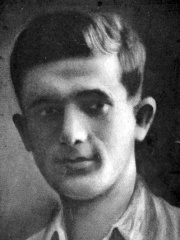
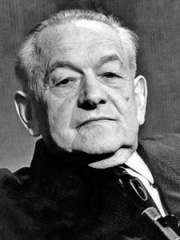
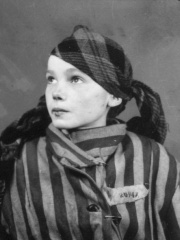
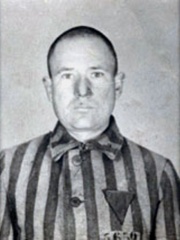
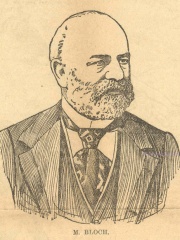
The Most Famous
SOCIAL ACTIVISTS from Poland
This page contains a list of the greatest Polish Social Activists. The pantheon dataset contains 840 Social Activists, 14 of which were born in Poland. This makes Poland the birth place of the 13th most number of Social Activists behind Japan, and Pakistan.
Top 10
The following people are considered by Pantheon to be the top 10 most legendary Polish Social Activists of all time. This list of famous Polish Social Activists is sorted by HPI (Historical Popularity Index), a metric that aggregates information on a biography's online popularity. Visit the rankings page to view the entire list of Polish Social Activists.

1. Rosa Luxemburg (1871 - 1919)
With an HPI of 85.33, Rosa Luxemburg is the most famous Polish Social Activist. Her biography has been translated into 137 different languages on wikipedia.
Rosa Luxemburg ( LUK-səm-burg; Polish: Róża Luksemburg [ˈruʐa ˈluksɛmburk] ; German: [ˈʁoːza ˈlʊksm̩bʊʁk] ; 5 March 1871 – 15 January 1919) was a Polish and naturalised-German Marxist theorist and revolutionary. She was a leading theorist of the Social Democratic Party of Germany (SPD) and later co-founded the anti-war Spartacus League, which evolved into the Communist Party of Germany (KPD). An influential member of the international socialist movement, she is remembered for her writings on imperialism and revolution, and as a champion of socialist democracy who famously stated, "Freedom is always and exclusively freedom for the one who thinks differently." Born and raised in Russian-ruled Poland to a secular Jewish family, Luxemburg became active in revolutionary politics in her youth. She co-founded the Social Democracy of the Kingdom of Poland and Lithuania (SDKPiL), a party that rejected Polish nationalism in favour of an international class struggle. After moving to Germany in 1898, she became the foremost voice of the SPD's revolutionary wing. In her 1900 pamphlet Social Reform or Revolution?, she defended the necessity of revolution against the reformist theories of Eduard Bernstein, arguing that the struggle for reforms was a means to an end, not an end in itself. Inspired by the 1905 Russian Revolution, she developed a theory of the mass strike as the proletariat's most important revolutionary tool, emphasizing the spontaneous creativity of the working class. As World War I approached, Luxemburg's anti-militarist and anti-imperialist convictions brought her into increasing conflict with the SPD leadership. In her major work, The Accumulation of Capital (1913), she argued that capitalism's need to expand into non-capitalist regions to survive was the driving force behind imperialism. She fiercely condemned the party's support for the war, and was imprisoned for most of the conflict. From prison, she wrote the influential Junius Pamphlet, which declared the war a betrayal of the working class and popularized the phrase "socialism or barbarism" to describe the choice facing humanity. While she celebrated the Russian Revolution of 1917, in a posthumously published manuscript she offered a sharp critique of the Bolsheviks' authoritarian policies, defending democratic freedoms and the need for a revolution rooted in mass participation. Her writings on the Russian Revolution were later viewed by some as a prescient critique of Stalinism. Released from prison during the German Revolution of 1918–1919, Luxemburg co-founded the KPD and became a central figure in the January 1919 Spartacist uprising in Berlin. After the uprising was crushed by the Freikorps, a government-sponsored paramilitary group, Luxemburg and her comrade Karl Liebknecht were captured and murdered. Following her death, Luxemburg became a heroine and martyr for Marxists. Her legacy has been a subject of intense debate, with her emphasis on spontaneity and democracy celebrated by many on the left—particularly by the New Left and those in the libertarian socialist tradition—but sharply criticized by the Stalinist tradition, which denounced "Luxemburgism" as a heresy.

2. Ferdinand Lassalle (1825 - 1864)
With an HPI of 74.84, Ferdinand Lassalle is the 2nd most famous Polish Social Activist. His biography has been translated into 54 different languages.
Ferdinand Johann Gottlieb Lassalle (11 April 1825 – 31 August 1864) was a German jurist, philosopher, and socialist activist. Best remembered as an initiator of the social democratic movement in Germany, in 1863 he founded the General German Workers' Association (ADAV), the first independent German workers' party. His political theories included state socialism and the popularisation of the iron law of wages. Born in Breslau to a prosperous Jewish family, Lassalle became a follower of Hegelian philosophy in his youth. During the 1840s and 1850s, he gained public renown for his involvement in a long and sensational legal case to vindicate the rights of Countess Sophie von Hatzfeldt. Active in the revolutions of 1848, he formed a complex and often antagonistic relationship with Karl Marx and Friedrich Engels. Lassalle also authored several major intellectual works, including the philosophical treatise Heraclitus the Obscure (1857) and the legal study The System of Acquired Rights (1861). Lassalle's political career began in the early 1860s during the Prussian constitutional conflict. Breaking with the liberal progressives, he began a public campaign to establish an independent political party for the working class. His agitation led to the founding of the ADAV, whose platform called for the achievement of socialism through state-aided producers' co-operatives, to be won by universal suffrage. Lassalle's political strategy focused on electoral politics and co-operation with the state, and he entered into secret negotiations with Prussian Minister President Otto von Bismarck in an attempt to forge an alliance between the workers' movement and the conservative Prussian state against the liberal bourgeoisie. His flamboyant and notorious personality, unique in the history of German social democracy, brought him great recognition but also contributed to a leadership style more suited to a demagogue than a democratic leader. Lassalle's political career was cut short at the age of 39 in 1864 when he was killed in a duel following a dispute over a young woman he wished to marry. Although the ADAV had only a few thousand members at the time of his death, it grew to become a major political force in the German Empire. In 1875, it merged with the Social Democratic Workers' Party of Germany to form what eventually became the Social Democratic Party of Germany (SPD). Lassalle's ideas, particularly his statist and nationalist tendencies, exerted a lasting influence on German social democracy, often in conflict with the theories of Marxism.

3. Irena Sendler (1910 - 2008)
With an HPI of 74.81, Irena Sendler is the 3rd most famous Polish Social Activist. Her biography has been translated into 61 different languages.
Irena Stanisława Sendler (née Krzyżanowska; 15 February 1910 – 12 May 2008), operating under the nom de guerre Jolanta, was a Polish humanitarian, social worker, and nurse who served in the Polish Underground Resistance during World War II in German-occupied Warsaw. From October 1943 she was head of the children's section of Żegota, the Polish Council to Aid Jews (Polish: Rada Pomocy Żydom). In the 1930s, Sendler conducted her social work as one of the activists connected to the Free Polish University. From 1935 to October 1943, she worked for the Department of Social Welfare and Public Health of the City of Warsaw. During the war she pursued conspiratorial activities, such as rescuing Jews, primarily as part of the network of workers and volunteers from that department, mostly women. Sendler participated, with dozens of others, in smuggling Jewish children out of the Warsaw Ghetto and then providing them with false identity documents and shelter with willing Polish families or in orphanages and other care facilities, including Catholic nun convents, saving those children from the Holocaust. The German occupiers suspected Sendler's involvement in the Polish Underground and in October 1943 she was arrested by the Gestapo, but she managed to hide the list of the names and locations of the rescued Jewish children, preventing this information from falling into the hands of the Gestapo. Withstanding torture and imprisonment, Sendler never revealed anything about her work or the location of the saved children. She was sentenced to death but narrowly escaped on the day of her scheduled execution, after Żegota bribed German officials to obtain her release. In post-war communist Poland, Sendler continued her social activism but also pursued a government career. In 1965, she was recognised by the State of Israel as Righteous Among the Nations. Among the many decorations Sendler received were the Gold Cross of Merit granted to her in 1946 for the saving of Jews and the Order of the White Eagle, Poland's highest honour, awarded late in Sendler's life for her wartime humanitarian efforts.

4. Mordechai Anielewicz (1919 - 1943)
With an HPI of 67.96, Mordechai Anielewicz is the 4th most famous Polish Social Activist. His biography has been translated into 24 different languages.
Mordechai Anielewicz (Hebrew: מרדכי אנילביץ'; 1919 – 8 May 1943) was the Polish leader of the Jewish Combat Organization (Polish: Żydowska Organizacja Bojowa, ŻOB) during the Warsaw Ghetto Uprising; the largest Jewish resistance movement during the Second World War. Anielewicz inspired further rebellions in both ghettos and extermination camps with his leadership. His character was engraved as a symbol of courage and sacrifice, and was a major figure of Jewish resistance during the Holocaust.

5. Jan Karski (1914 - 2000)
With an HPI of 65.62, Jan Karski is the 5th most famous Polish Social Activist. His biography has been translated into 28 different languages.
Jan Karski (born Jan Kozielewski, 24 June 1914 – 13 July 2000) was a Polish soldier, resistance-fighter, and diplomat during World War II. He is known for having acted as a courier in 1940–1943 to the Polish government-in-exile and to Poland's Western Allies about the situation in German-occupied Poland. He reported about the state of Poland, its many competing resistance factions, and also about Germany's destruction of the Warsaw Ghetto and its operation of extermination camps on Polish soil that were murdering Jews, Poles, and others. Emigrating to the United States after the war, Karski completed a doctorate and taught for decades at Georgetown University in international relations and Polish history. He lived in Washington, D.C., until the end of his life. Karski did not speak publicly about his wartime missions until 1981 when he was invited as a speaker to a conference on the liberation of the camps. Karski was featured in Claude Lanzmann's nine-hour film Shoah (1985), about the Holocaust, based on oral interviews with survivors, a historian, witnesses who lived near death camps, and several German officials involved in the destruction of European Jewry. After the fall of the Soviet Union, Karski was honored by the new Polish government, other European nations, and the US for his wartime role.

6. Leopold Trepper (1904 - 1982)
With an HPI of 65.18, Leopold Trepper is the 6th most famous Polish Social Activist. His biography has been translated into 19 different languages.
Leopold Zakharovich Trepper (23 February 1904 – 19 January 1982) was a Polish-Israeli Communist, career Soviet military intelligence officer of the Red Army Intelligence and resistance fighter. With the code name Otto, Trepper had worked with the Red Army since 1930. Trepper and Richard Sorge, a Soviet military intelligence officer, were the two main Soviet agents in Europe and were employed as roving agents to set up espionage networks throughout Europe and in Japan. While Sorge was a penetration agent, Trepper ran a series of clandestine cells for organising agents in Europe. Trepper used the latest technology at the time—small wireless radios—to communicate with Soviet intelligence. Although the Funkabwehr's monitoring of the radios transmission eventually led to the destruction of Trepper's organisation, this sophisticated use of the technology enabled the espionage organisation to behave as a network with the ability to achieve tactical surprise and deliver high-quality intelligence, such as the warning of Operation Barbarossa. In 1936, Trepper became the technical director of a Soviet Red Army Intelligence unit in western Europe. He was responsible for recruiting agents and creating espionage networks. Trepper was an experienced intelligence officer, and an extremely resourceful and capable man completely at home in the west. He was a man who could not be drawn in conversation, who lived a reclusive life, and had a talent of judging people that enabled him to easily penetrate significant groups. By the start of World War II, Trepper controlled a large espionage network in Belgium, that had links with Dutch, German and Swiss agents and operated seven separate espionage networks in France. By 1942, his operation had been discovered and he was arrested on 24 November 1942 by the Sonderkommando Rote Kapelle, who gave it the name Red Orchestra ("Rote Kapelle"). Trepper agreed to work with the Germans. He eventually betrayed many of his collaborators who went to their death, in an effort to shield the French Communist Party (PCF) from investigation. However, he eventually betrayed the vast majority of them as well. On 13 September 1943, he managed to escape. At the end of the war, he returned to the Soviet Union and was imprisoned for 10 years. When he was released, he returned to Poland. In 1974, he migrated to Israel with his wife and three sons.

7. Czesława Kwoka (1943 - 1943)
With an HPI of 64.07, Czesława Kwoka is the 7th most famous Polish Social Activist. Her biography has been translated into 17 different languages.
Czesława Kwoka (15 August 1928 – 12 March 1943) was a Polish Catholic girl who was murdered at the age of 14 in Auschwitz. One of the thousands of minor child and teen victims of genocide of Poles by Nazi Germany in German-occupied Poland, she is among those memorialized in an Auschwitz-Birkenau State Museum exhibit, "Block no. 6: Exhibition: The Life of the Prisoners". Photographs of Kwoka and others, taken by the "famous photographer of Auschwitz", Wilhelm Brasse, between 1940 and 1945, are displayed in the Museum's photographic memorial. Brasse discusses several of the photographs in The Portraitist, a 2005 television documentary about him.

8. Franciszek Gajowniczek (1901 - 1995)
With an HPI of 63.53, Franciszek Gajowniczek is the 8th most famous Polish Social Activist. His biography has been translated into 15 different languages.
Franciszek Gajowniczek (15 November 1901 – 13 March 1995) was a Polish army sergeant whose life was saved at the Auschwitz concentration camp by Catholic priest Maximilian Kolbe, who volunteered to die in his place. Gajowniczek had been sent to Auschwitz concentration camp from a Gestapo prison in Tarnów. He was captured while crossing the border into Slovakia after the defeat of the Modlin Fortress during the 1939 invasion of Poland by Nazi Germany. Gajowniczek survived the war and afterward became a lay missionary, dedicating his life to spreading the story of Kolbe's sacrifice.

9. Jan Gotlib Bloch (1836 - 1902)
With an HPI of 63.20, Jan Gotlib Bloch is the 9th most famous Polish Social Activist. His biography has been translated into 20 different languages.
Jan Gotlib "Bogumił" Bloch (Russian: Иван Станиславович Блиох or Блох; 24 July 1836 – 7 January 1902) was a Polish banker and railway financier who devoted his private life to the study of modern industrial warfare. Born Jewish and a convert to Calvinism, he spent considerable effort to opposing the prevalent antisemitic policies of the Tsarist government in Congress Poland, and was sympathetic to the fledgling Zionist movement. Bloch had studied at the University of Berlin, worked at a Warsaw bank and then moved to St. Petersburg, capital of the Russian Empire (which governed much of the Polish lands at the time). There, he took part in the development of the Russian Railways, both in financing the construction of new railways and in writing research papers on the subject. He founded several banking, credit and insurance companies. In 1877, he was appointed a member of the Russian Finance Ministry's Scientific Committee. Bloch was married to Emilia Julia Kronenberg H. Koroniec (1845–1921), the granddaughter of Polish banker Samuel Eleazar Kronenberg, daughter of medical doctor Henryk Andrzej Kronenberg and niece of industrialist and Polish nationalist Leopold Stanislaw Kronenberg; the Kronenberg and Bloch families had often been in competition with each other in several 19th-century Polish businesses.
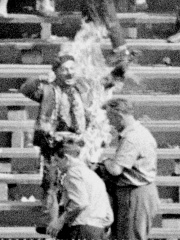
10. Ryszard Siwiec (1909 - 1968)
With an HPI of 61.87, Ryszard Siwiec is the 10th most famous Polish Social Activist. His biography has been translated into 24 different languages.
Ryszard Siwiec (Polish pronunciation: [ˈrɨʂart ˈɕivjɛt͡s]; 7 March 1909 – 12 September 1968) was a Polish accountant and former Home Army resistance member who was the first person to die by self-immolation in protest against the Warsaw Pact invasion of Czechoslovakia. Although his act was captured by a motion picture camera, Polish press omitted any mention of the incident, which was successfully suppressed by the authorities. Siwiec prepared his plan alone, and few people realized what he tried to achieve with his sacrifice. His story remained mostly forgotten until the fall of communism, when it was first recounted in a documentary film by Polish director Maciej Drygas. Since then, Siwiec has been posthumously awarded a number of Czech, Slovak, and Polish honours and decorations. Siwiec's death preceded the much better known self-immolation of Jan Palach in Prague four months later. Siwiec was the first person from Central and Eastern Europe to self-immolate in protest of the invasion.
People
Pantheon has 14 people classified as Polish social activists born between 1810 and 1977. Of these 14, 2 (14.29%) of them are still alive today. The most famous living Polish social activists include Danuta Wałęsa, and Adam Bodnar. The most famous deceased Polish social activists include Rosa Luxemburg, Ferdinand Lassalle, and Irena Sendler. As of April 2024, 1 new Polish social activists have been added to Pantheon including Adam Bodnar.
Living Polish Social Activists
Go to all RankingsDeceased Polish Social Activists
Go to all RankingsRosa Luxemburg
1871 - 1919
HPI: 85.33
Ferdinand Lassalle
1825 - 1864
HPI: 74.84
Irena Sendler
1910 - 2008
HPI: 74.81
Mordechai Anielewicz
1919 - 1943
HPI: 67.96
Jan Karski
1914 - 2000
HPI: 65.62
Leopold Trepper
1904 - 1982
HPI: 65.18
Czesława Kwoka
1943 - 1943
HPI: 64.07
Franciszek Gajowniczek
1901 - 1995
HPI: 63.53
Jan Gotlib Bloch
1836 - 1902
HPI: 63.20
Ryszard Siwiec
1909 - 1968
HPI: 61.87
Franceska Mann
1917 - 1943
HPI: 58.61
Ernestine Rose
1810 - 1892
HPI: 55.64
Newly Added Polish Social Activists (2025)
Go to all RankingsOverlapping Lives
Which Social Activists were alive at the same time? This visualization shows the lifespans of the 12 most globally memorable Social Activists since 1700.

